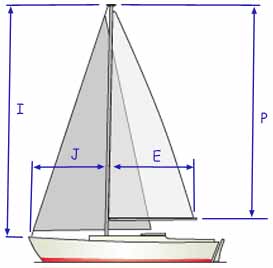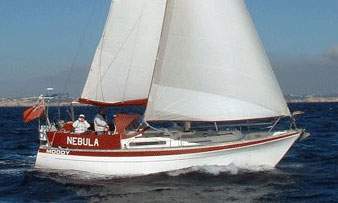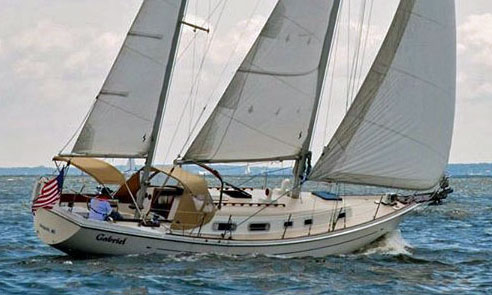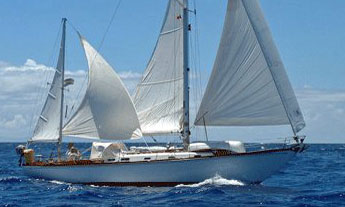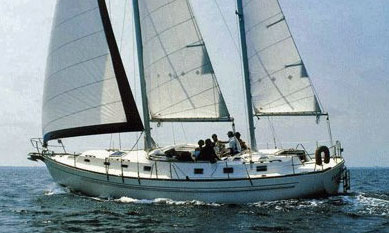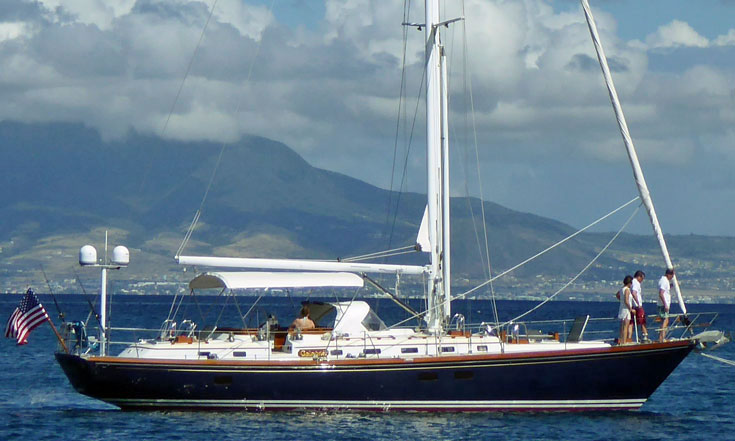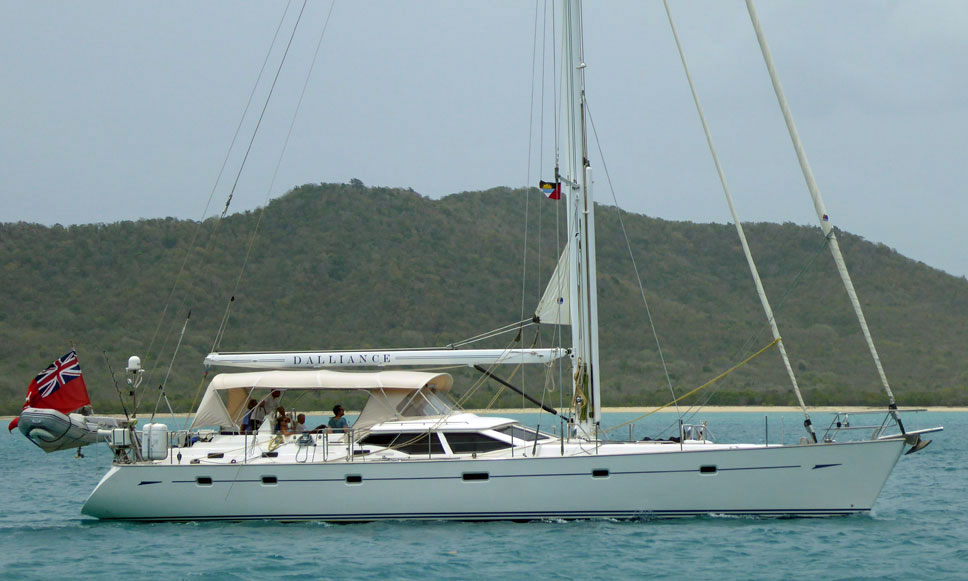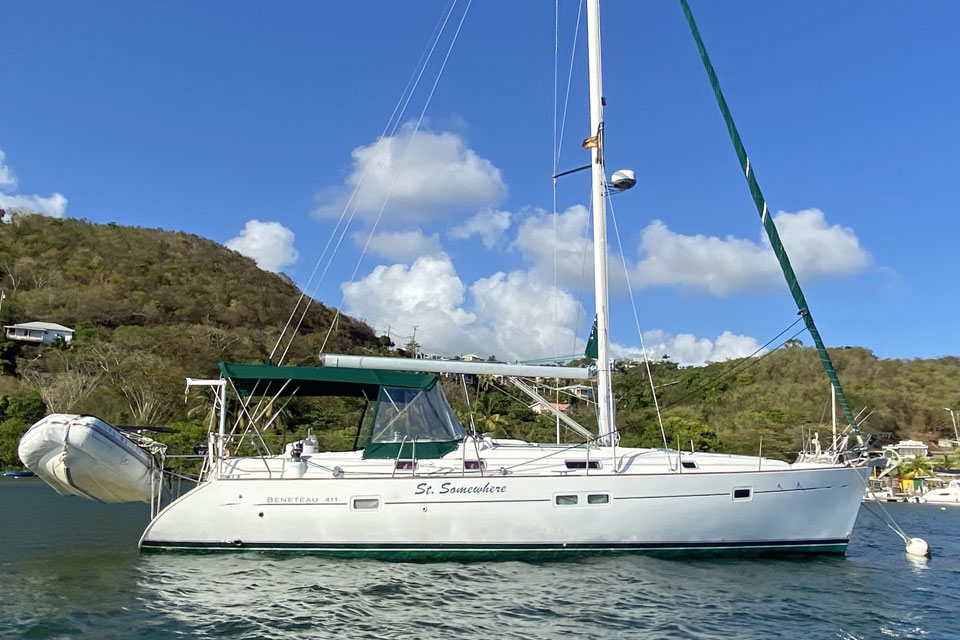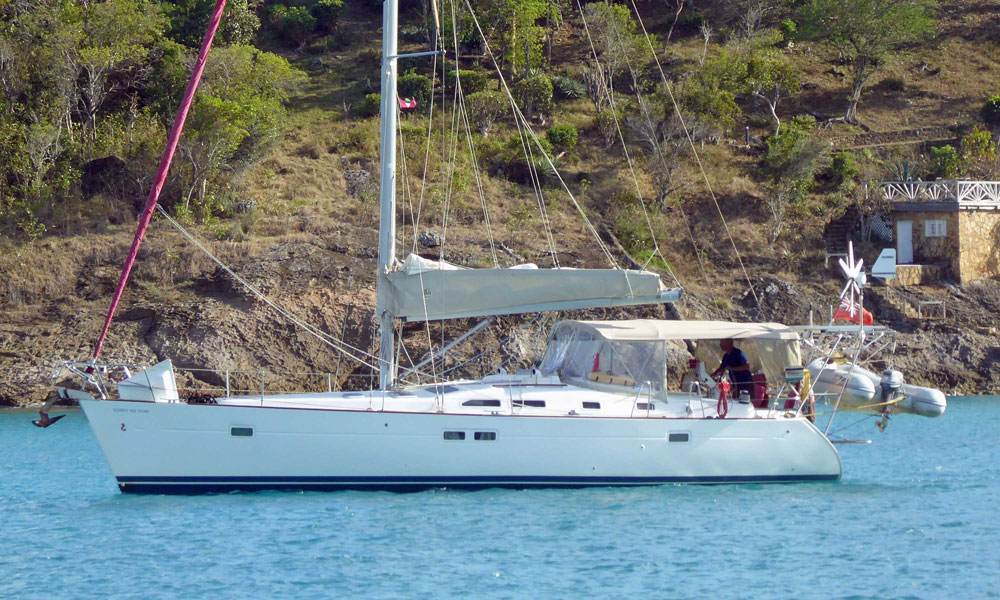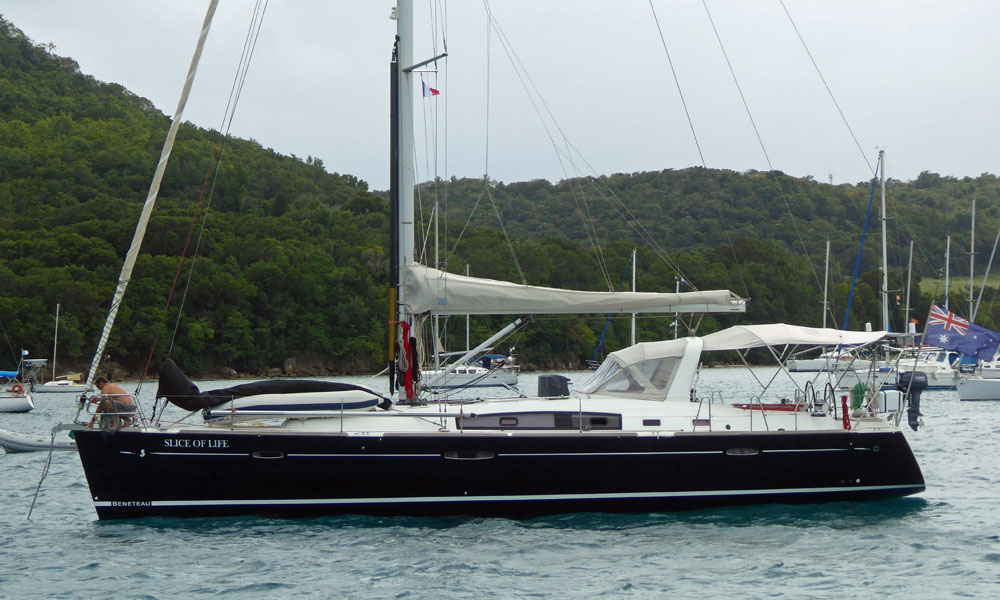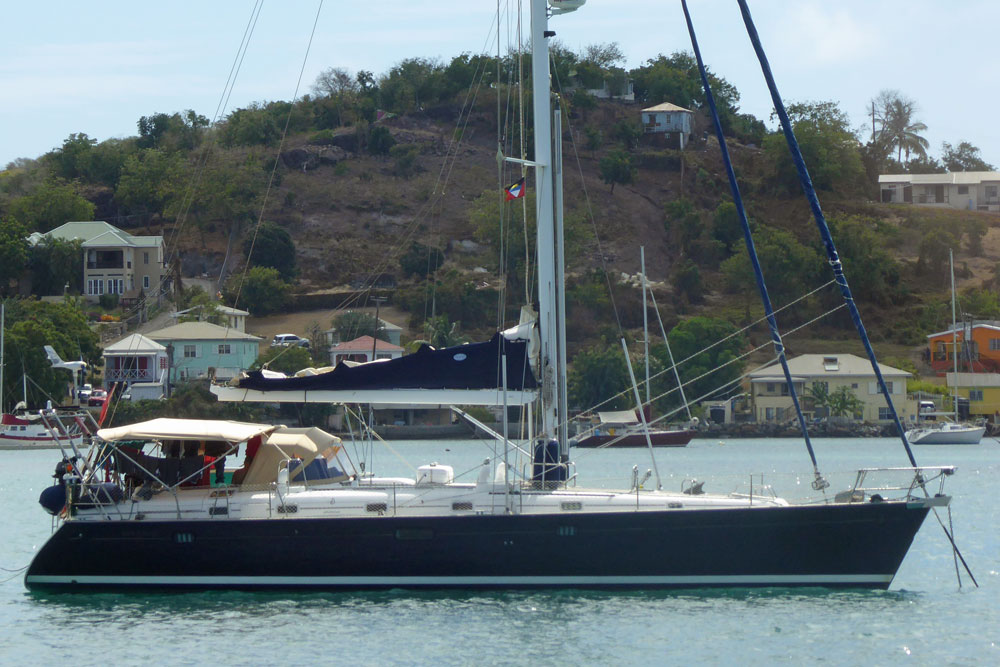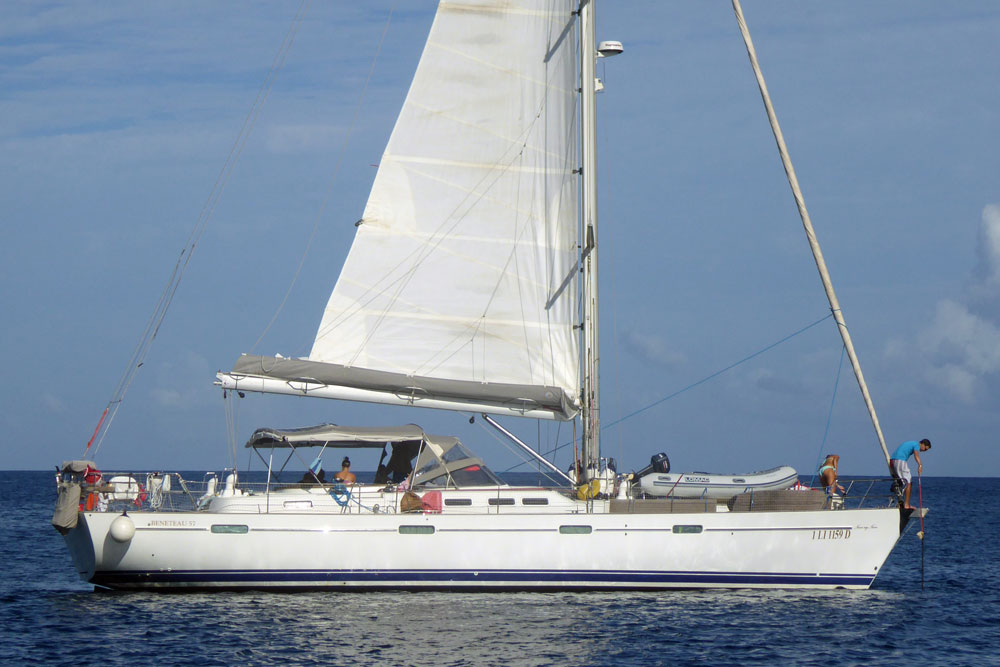- Home
- Cruising Yachts 35' to 40'
- Beneteau 393
The Beneteau 393 Sailboat
Specs & Key Performance Indicators
The Beneteau 393, a masthead cruising sloop, was designed by the Berret-Racoupeau Yacht Design and built in France by Beneteau.
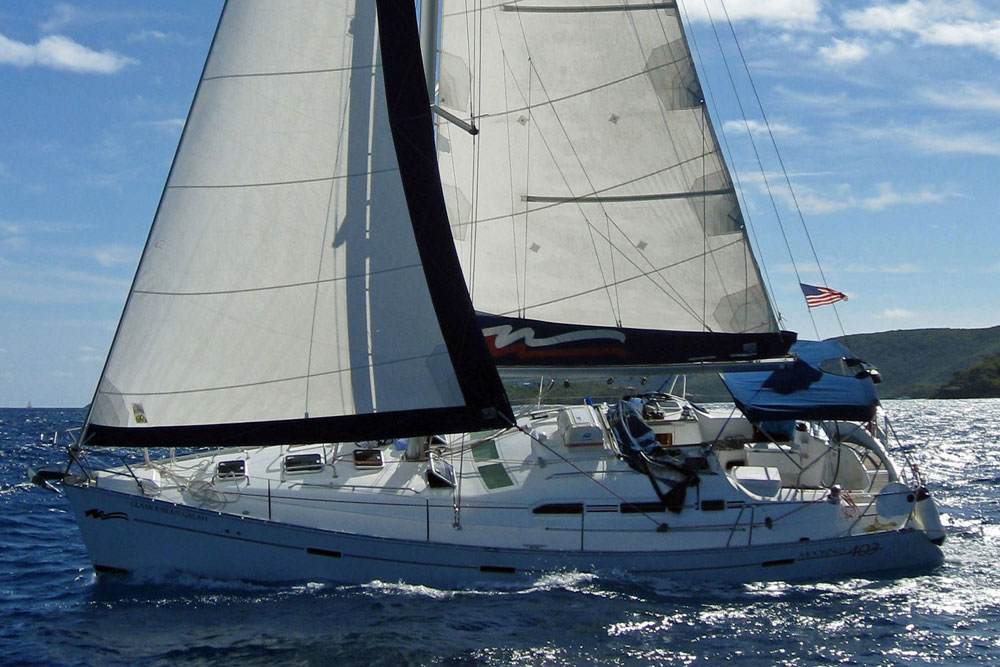 The Beneteau 393
The Beneteau 393Published Specification for the Beneteau 393
Keel & Rudder Configuration: Fin keel with winglets & spade rudder
Hull Material: GRP (Fiberglass)
Length Overall: 38'2" (11.6 m)
Waterline Length: 35'1" (10.7 m)
Beam: 13'0" (4.0 m)
Draft: 5'1" (1.6 m)
Rig Type: Masthead sloop
Displacement: 17,152 lb (7,780 kg)
Ballast: 5,357 lb (2,430 kg)
Water Tank Capacity: 132 gallons (500 L)
Fuel Tank Capacity: 36 gallons (135 L)
Hull Speed: Approximately 8.0 knots
Designer: Jean Berret & Olivier Racoupeau
Builder: Beneteau
Year First Built: 2001
Year Last Built: 2007
Options & Alternatives
Keel Options
- Deep Draft: Approximately 6'4" (1.95 m)
- Shallow Draft: Approximately 5'1" (1.55 m)
Interior Layout Options
- Two-Cabin Layout: This version featured a spacious owner's cabin forward, a large aft cabin, and a single head.
- Three-Cabin Layout: This version included two aft cabins, a forward cabin, and two heads.
Alternatives
The Beneteau 393, Beneteau Oceanis 393 and Beneteau Oceanis Clipper 393 are closely related models with some distinctions primarily in marketing and minor features. For example...
- Beneteau 393: This is the base model, known for its solid construction and good performance as a cruiser. It features a masthead sloop rig, a choice between deep and shallow draft keels, and various interior layouts.
- Beneteau Oceanis 393: Essentially the same as the Beneteau 393 but marketed under the Oceanis line, which emphasizes comfort and cruising capabilities. It sports the same hull design and specifications but often features more luxurious interior finishes.
- Beneteau Oceanis Clipper 393: Part of the Oceanis Clipper series, which focuses on ease of handling and cruising comfort. It shares the same hull and basic specifications as the Beneteau 393 and Oceanis 393 but includes enhancements such as improved deck fittings, sail handling systems, and more refined interior options. The Clipper series often included features like in-mast furling mainsails and other conveniences designed to make cruising more enjoyable.
In summary, while the core design and performance characteristics remain consistent across these models, the Oceanis and Clipper versions offer additional features and refinements aimed at enhancing comfort and ease of use for cruising sailors.
Sail Areas & Rig Dimensions
Sail Area
- Mainsail Area: 304ft2 (28.24m²)
- Genoa Area (140%): 334ft2 (31.03m²)
Total Sail Area (100%): 638ft2 (59.27m²)
Rig Dimensions
- I: 46.08 ft (14.04 m)
- J: 14.50 ft (4.42 m)
- P: 40.33 ft (12.29 m)
- E: 15.08 ft (4.60 m)
Published Design Ratios
The Key Performance Indicators (KPIs)
- Sail Area/Displacement Ratio: 15.4
- Ballast/Displacement Ratio: 31
- Displacement/Length Ratio: 177
- Comfort Ratio: 24
- Capsize Screening Formula: 2.0
The following analysis of the primary design ratios gives an indication of the boat's likely sailing characteristics, but see the 'Notes of Caution' that follow below:
- Sail Area/Displacement Ratio (15.4): This ratio indicates that the Beneteau 393 is slightly underpowered. It suggests that the boat will have moderate performance, suitable for cruising rather than racing. It will perform adequately in a variety of wind conditions but may not excel in light winds.
- Ballast/Displacement Ratio (31): With a ballast/displacement ratio of 31, the Beneteau 393 has moderate stiffness. This means it has a reasonable ability to stand up to the wind, providing a balance between stability and performance. It won't be as stiff as boats with a ratio of 40 or more, but it will still offer a comfortable and stable ride.
- Displacement/Length Ratio (177): This ratio places the Beneteau 393 in the light displacement category. Boats with a displacement/length ratio between 100 and 200 are considered light displacement, meaning the Beneteau 393 will require less sail area to reach its hull speed. This contributes to good performance and ease of handling, especially in moderate conditions.
- Comfort Ratio (24): A comfort ratio of 24 indicates a somewhat lively motion, typical of a coastal cruiser with moderate stability. This means the boat will have a bit of a lively motion in rough seas but will still be comfortable for coastal cruising and short offshore passages. It strikes a balance between performance and comfort.
- Capsize Screening Formula (2.0): A capsize screening value of 2.0 suggests that the Beneteau 393 is on the threshold for bluewater capability. It is suitable for ocean passages but is better suited for coastal cruising. The lower the value, the better the boat's ability to handle rough seas and reduce the risk of capsizing.
Overall, the Beneteau 393 is designed as a comfortable and capable cruiser, offering a good balance between performance, stability and comfort for coastal and moderate offshore sailing.
Design Ratios: Notes of Caution...
- The Sail Area/Displacement Ratio (SA/D): This ratio provides an estimate of the sail power relative to the boat's weight, which can indicate potential speed in various wind conditions. But it doesn't account for the efficiency of the sail plan, the rigging, or the skill of the crew. Real-world performance can vary significantly based on these factors.
- The Ballast/Displacement Ratio (B/D): This ratio gives an idea of the boat's stability and stiffness, which is crucial for handling and safety. But it doesn't consider the distribution of the ballast or the hull shape, both of which can greatly affect stability. A high B/D ratio alone doesn't guarantee a stable boat if the ballast is poorly distributed.
- The Displacement/Length Ratio (D/L): This ratio helps predict the boat's speed potential and its behaviour in different sea conditions. But it doesn't account for the hull design or the boat's overall weight distribution. Two boats with the same D/L ratio can perform very differently if their hull shapes are different.
- The Comfort Ratio (CR): This ratio estimates the boat's motion comfort in a seaway, which is important for long passages. But it doesn't consider the boat's interior layout, which can also affect comfort. Additionally, personal tolerance to motion varies, so a boat that is comfortable for one person might not be for another.
- The Capsize Screening Formula (CSF): This formula assesses the likelihood of a boat capsizing in heavy seas, which is critical for offshore safety. But it doesn't take into account the boat's handling characteristics or the skill of the crew. A boat with a low CSF can still capsize if poorly handled in severe conditions.
General Limitations
- Static Nature: These ratios are static measurements and don't account for dynamic factors like wave action, wind gusts, or crew actions.
- Simplification: They simplify complex interactions into single numbers, which can be misleading. Real-world performance is influenced by a multitude of factors that these ratios can't fully capture.
- Context: The context in which the boat is used (e.g., coastal cruising vs. offshore racing) can greatly affect how these ratios should be interpreted.
In summary, while these ratios provide valuable insights into the theoretical performance characteristics of a sailboat, they should be used as part of a broader assessment that includes practical experience, sea trials, and expert advice.
More Specs & Key Performance Indicators for Popular Cruising Boats
The above text was drafted by sailboat-cruising.com using GPT-4 (OpenAI’s large-scale language-generation model) as a research assistant to develop source material; we believe it to be accurate to the best of our knowledge.
Other sailboats in the Beneteau product range include:
Recent Articles
-
Is Marine SSB Still Used?
Apr 15, 25 02:05 PM
You'll find the answer to this and other marine SSB-related questions right here... -
Is An SSB Marine Radio Installation Worth Having on Your Sailboat?
Apr 14, 25 02:31 PM
SSB marine radio is expensive to buy and install, but remains the bluewater sailors' favourite means of long-range communication, and here's why -
Correct VHF Radio Procedure: Your Questions Answered
Apr 14, 25 08:37 AM
Got a question about correct VHF radio procedure? Odds are you'll find your answer here...
